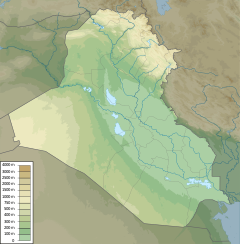Uruk Trough
| Uruk Trough | |
|---|---|
 The Uruk Trough as displayed in the British Museum | |
| Material | Gypsum |
| Size | 96.5 cm long |
| Created | 3300-3000 BC |
| Present location | British Museum, London |
| Registration | 1928,0714.1 |
The Uruk Trough is an important
Uruk Vase, the trough is considered to be one of the earliest surviving works of narrative relief sculpture from the Middle East, dating to 3300-3000 BC, during the Uruk period. Simple relief sculpture is known from much earlier periods, from the site of Göbekli Tepe
, dating to circa 9000 BC.
It is thought to have served as some sort of cult image in the temple of the goddess Inanna. The carving depicts a procession of sheep, but the meaning of this scene is unclear.
History and discovery
The trough was found at Uruk, an ancient city of
National Art Collections Fund in 1928, just before the German Oriental Society
carried out excavations at the site.
Description
The Uruk Trough is made of
symbols of the goddess Inanna and the carvings may relate to the fecundity
of the land under Inanna's protection.
See also
- Uruk Vasefor a contemporary object decorated in a similar style
References
Further reading
- D. Collon, Ancient Near Eastern art (London, The British Museum Press, 1995)
- J. Black and A. Green, Gods, demons and symbols of ancient mesopotamia (London, The British Museum Press, 1992)
- H.W.F. Saggs, Babylonians (London, The British Museum Press, 1995)
- P.P. Delougaz, 'Animals emerging from a hut', Journal of Near Eastern Studies-1, 27 (1968), pp. 186–7


